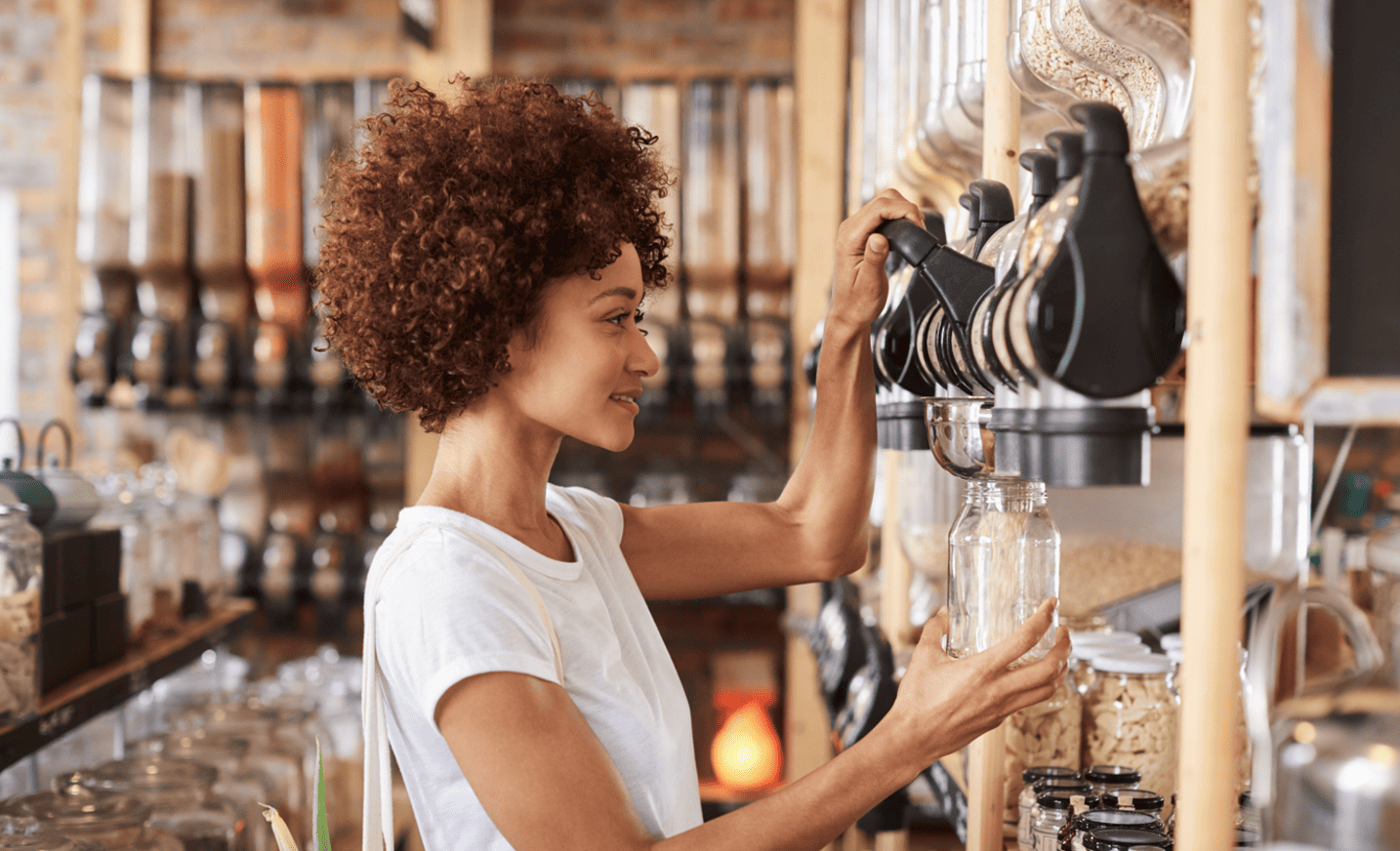
If sustainable shopping wasn’t already incredibly important, it is now. The latest Intergovernmental Panel on Climate Change report suggests that climate change is the biggest health crisis of our time. Jordan Kelly, takes a look at exactly what sustainable shopping entails and how brands and retailers can get there
Insisting on being blasé about sustainable shopping will get us nowhere! There’s already so much evidence stacking up to prove that thorough action is needed, and now. We just can’t afford to waste any more time.
Fortunately, we’re seeing an increasing number of trends and innovations that not only support sustainable shopping but also help consumers to put plans into action. It’s never been easier, so let’s make a big difference by making small changes to our shopping habits.
The term ‘shop until you drop’ is so last decade; instead, find eco-friendly alternatives for what you need, and then shop and stop. Here, Oceansexplores five of the hottest points for sustainable shopping right now.
What is meant by sustainable shopping?
First, let’s understand exactly what sustainable shopping is.
It’s a term we often see as the climate emergency continues to swell, but some brands make it seem way more complicated than it actually is, subsequently putting consumers off from giving it a try.
In a nutshell, it simply means understanding a product’s environmental and social impact before purchasing it.
From there, you start to become much more mindful of the way you shop and seek alternative methods and products – where possible – that don’t cause as much harm to the environment.
Upcycling
Put that credit card down and cycle up! Upcycling is a trend that’s becoming progressively more current, especially across social media.
Instead of going out and buying a new product (and thus contributing further to those social and environmental impacts), first see if there’s an existing product that you can breathe new life into.
For example, why buy a whole new desk when your current one just needs a little TLC? Save money and reduce your carbon footprint by instead fixing that broken draw, cleaning the wood, and giving the frame a lick of paint.
Mobile and tablet apps
There’s an app for pretty much everything these days. Thankfully, the ones relevant to climate change and sustainable shopping are quite handy.
Here are just a few of the tech innovations that are making a difference:
Too Good to Go – When a restaurant or store has unsold food that is due to go to waste, consumers can purchase ‘Surprise Bags’ at a heavily discounted price. Participating eateries include Greggs, Toby Carvery, and Costa.
Kitche – In the UK, 9.52 million tonnes of food is wasted per year. The Kitche app helps reduce this by allowing you to import your food and keep track of what you have at home, providing recipes to ensure no ingredients go to waste.
Freegle – This app helps Brits to reuse and reduce by offering a simple way to give and receive things that would otherwise be thrown away. Items include cables, furniture, and plant pots. Waste not, want not!
Vinted – You’ll most likely find second-hand clothes and accessories on the Vinted app, giving customers the chance to avoid buying new and instead buy pre-loved items that would otherwise end up in a dumping ground.
Recycled materials
Consumers are beginning to demand products that have been made or packaged using recycled materials, meaning brands and retailers have had to adapt – or lose paying customers.
Dell, Adidas, and Garnier are just three global brands that have pledged to use recycled materials in the manufacturing of their products. Not only is this a smart move for the planet, but also a smart move for business.
Garnier, the world’s leading natural beauty brand, produces shampoos and hair care formulas with an average of 91% biodegradability.
Similarly, in the production of their clothes, Adidas uses yarn made from 50 per cent ocean plastic and 50 per cent recycled polyester.
The materials used for packaging products are another detail that’s come under scrutiny. For the moulded trays used for packaging certain devices, Dell uses 50% ocean-bound plastic and 50% recycled HDPE plastic.
Some products are even completely plastic-free in their packaging; you can now find plastic-free toilet paper, hair care products, cleaning products, and more.
Circular economy
Once upon a time, retailers and manufacturers were way too cosy with the idea of making products that could be used and then disposed of.
Now, the circular economy concept encourages the design and creation of products that follow a “make, use, and then remake” structure. Ta-da, the circle!
This business model is about so much more than just recycling. Instead, manufacturers are having to reimagine an entirely new way to make products that have been around for centuries.
It’s not just about creating something using sustainable materials; products must be designed for multiple uses as well as feature easy repair and maintenance qualities. Oh, and simple disassembly once all reuse or repair options have been exhausted.
The circular economy business model can be achieved through:
Design – Design products with the aim of making them last as long as possible, as well as offering better and easier opportunities to repair in the event of a fault.
Reuse and repair – Manufacturers should create and offer expert maintenance services so that they can oversee the repair process of their products.
Recycling – Make products easy to recycle by creating them in a way that enables easy disassembly and subsequent recycling.
Remanufacturing – When a product reaches the end of its life, there should be measures in place that help repurpose it. Cats have nine lives, but products within the circular economy have more.
Adidas, Ikea, and Burger King are three global brands that are investing in the circular economy. The more brands jump on this eco-friendly Ferris wheel, the better off we’ll be.
We must start giving back
Shopping is no longer about taking what we need; we must start giving back if we want to stand any real chance of fighting against climate change. Retail therapy doesn’t need to be at the expense of the planet!
To appreciate that there’s more to buying a product than just buying a product is the first step in grasping sustainable shopping. Once we have that knowledge, we can begin making better decisions that not only benefit the environment but also our bank accounts.
Author
Jordan Kelly is brand marketing manager for sustainable toilet paper brand Oceans









